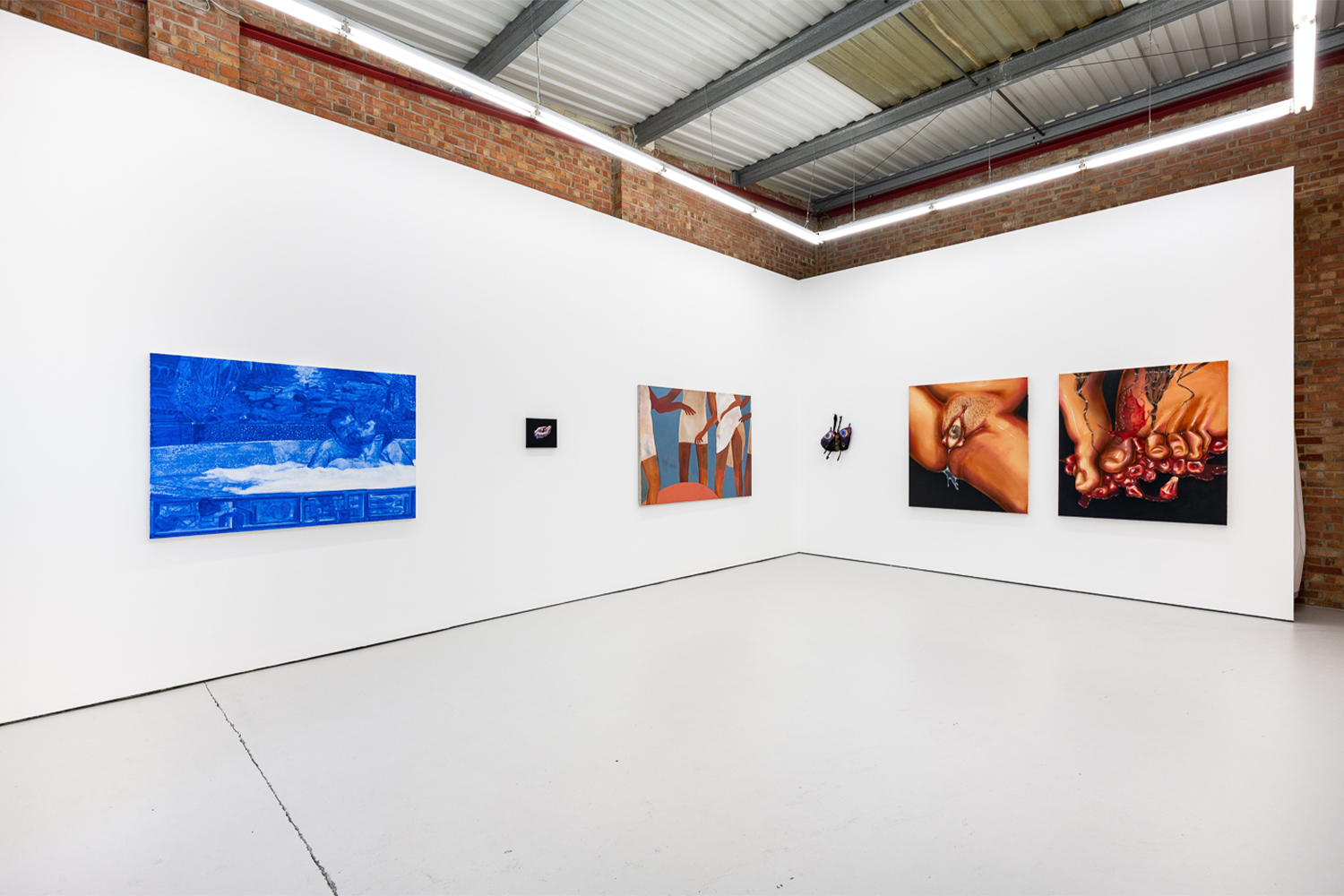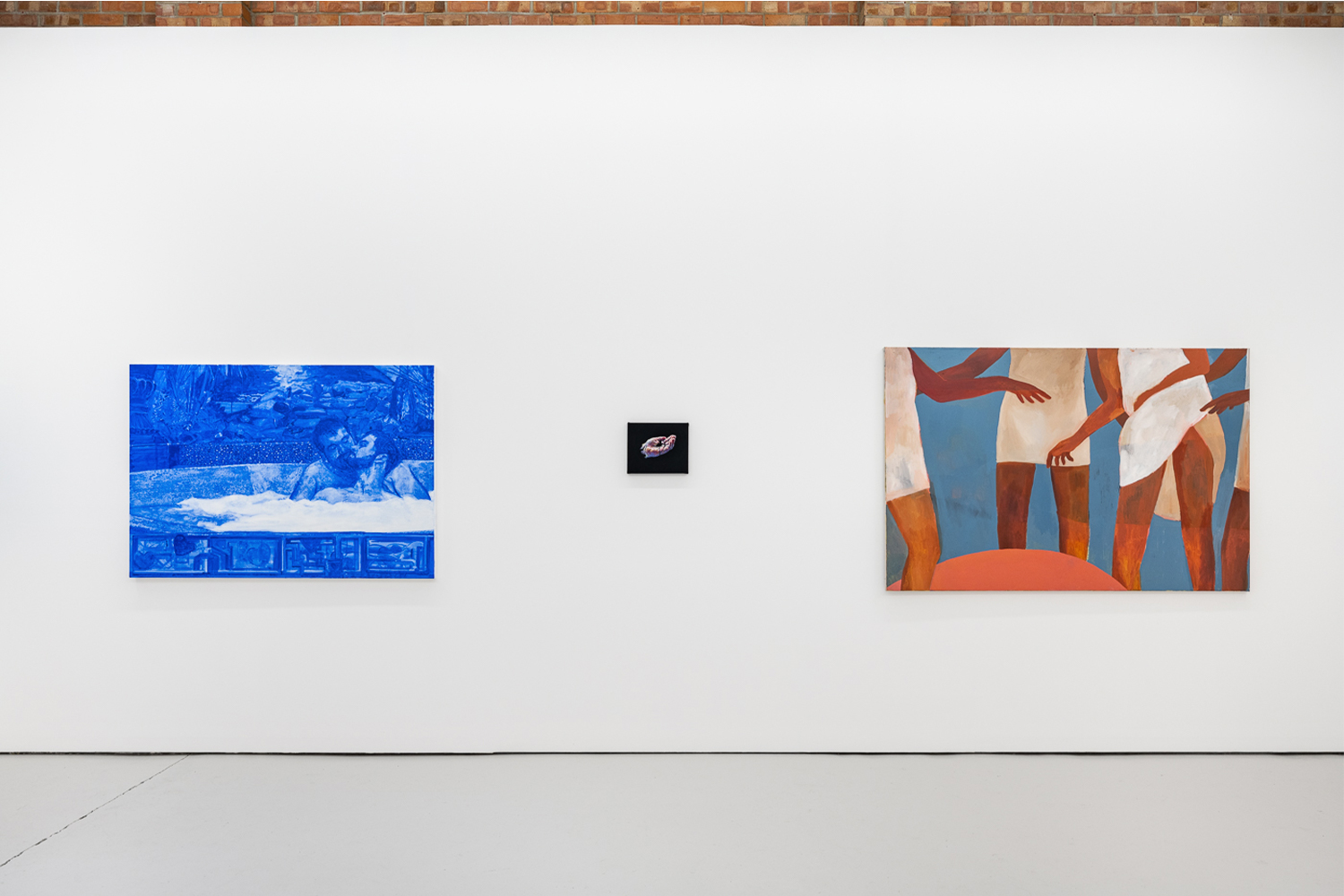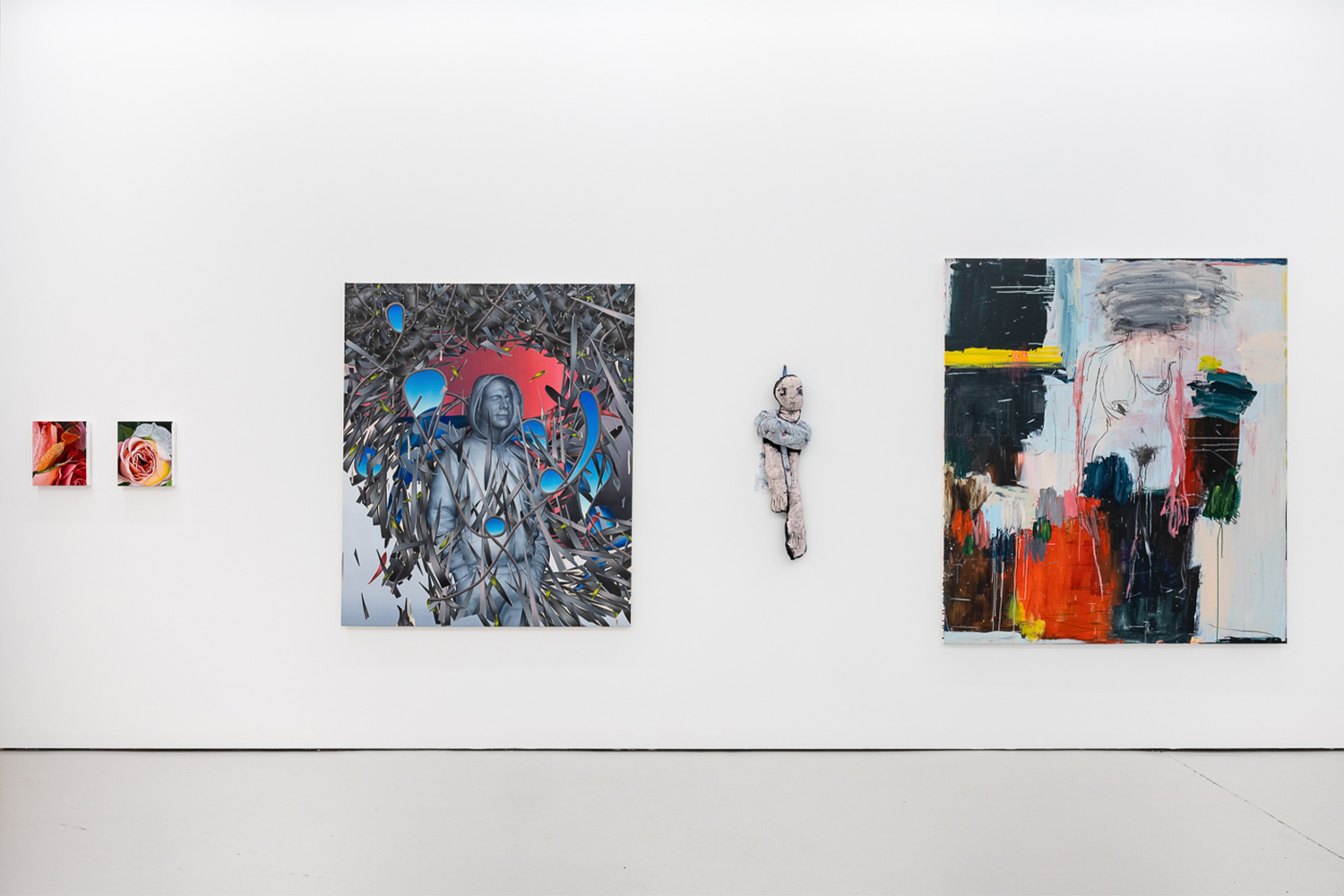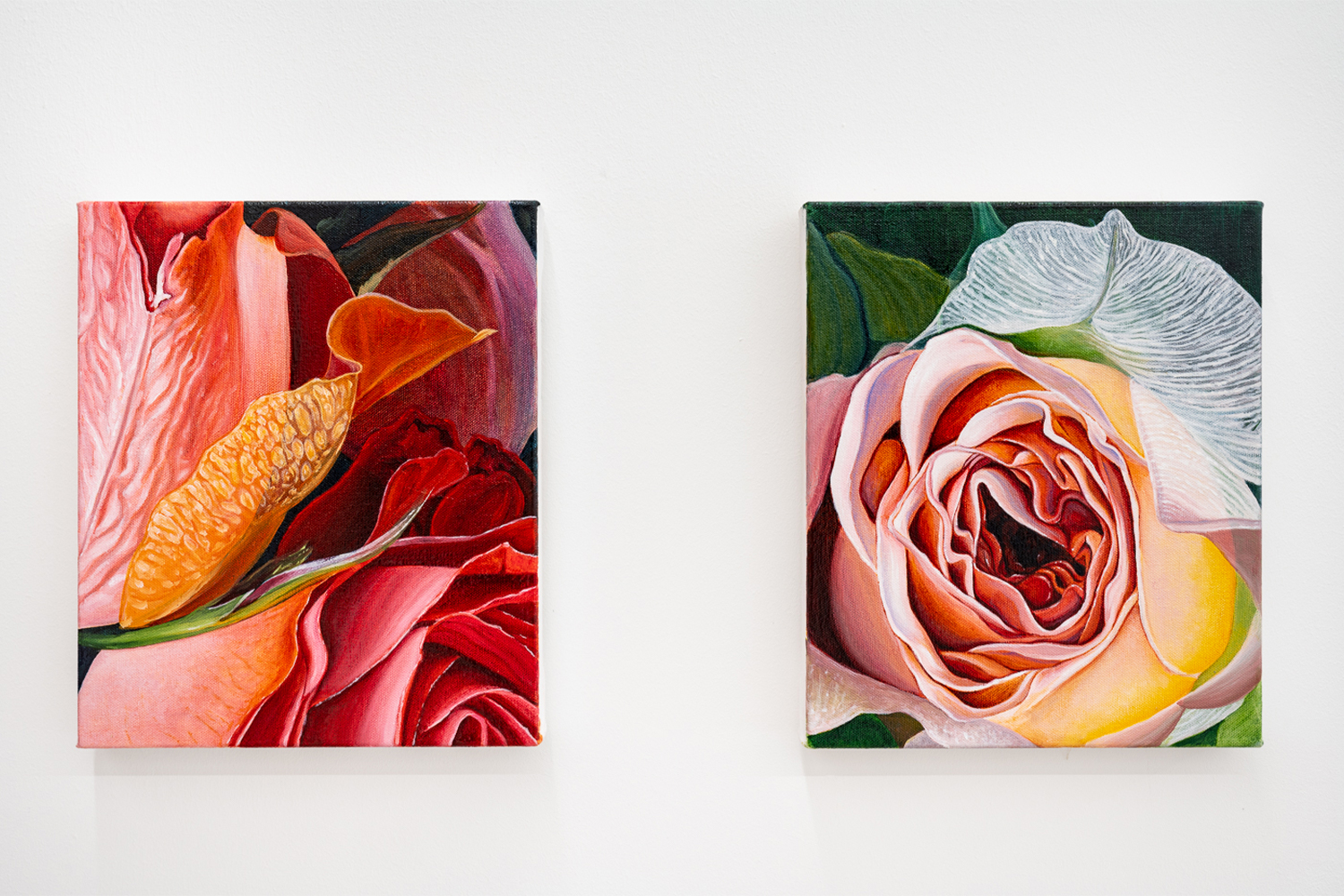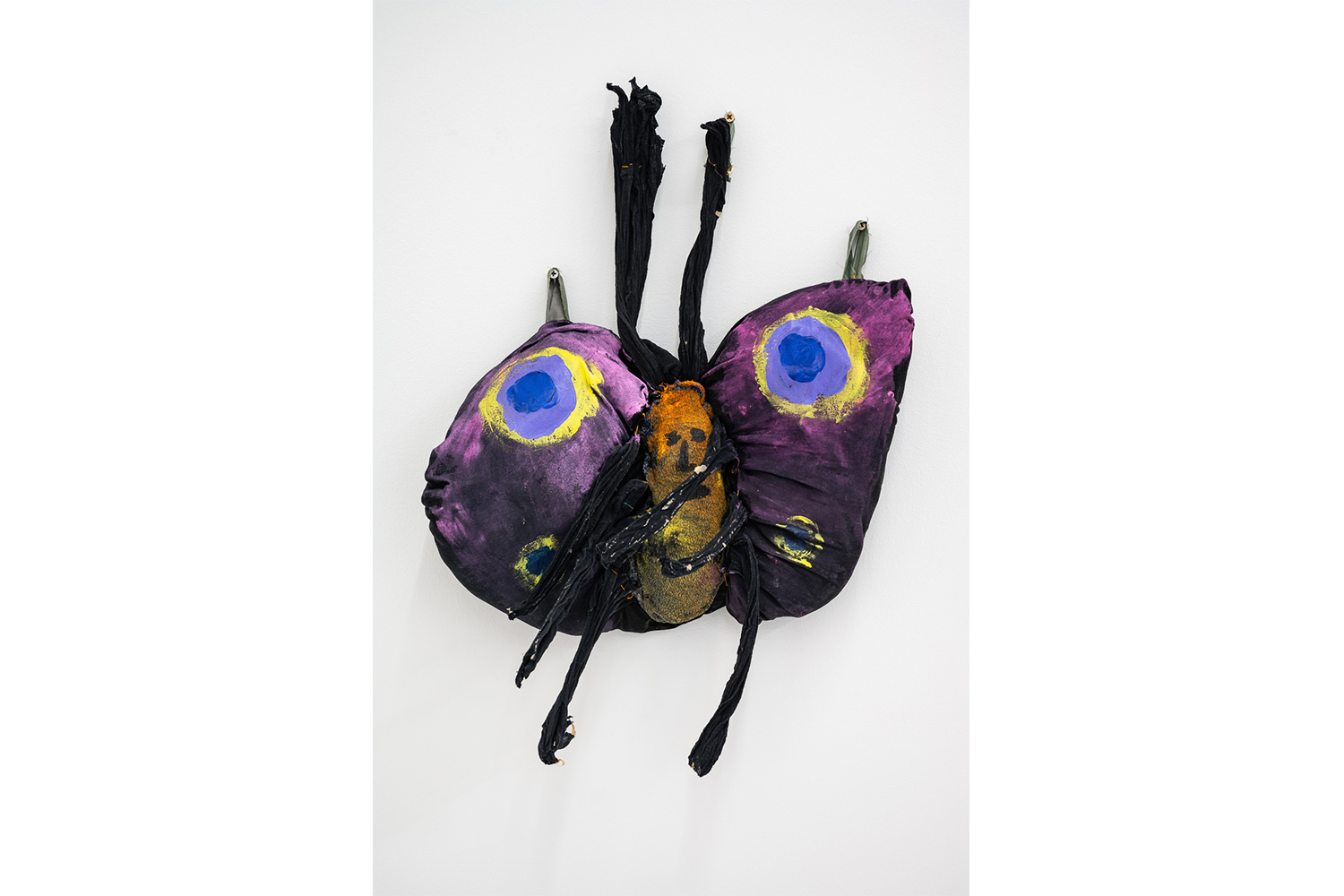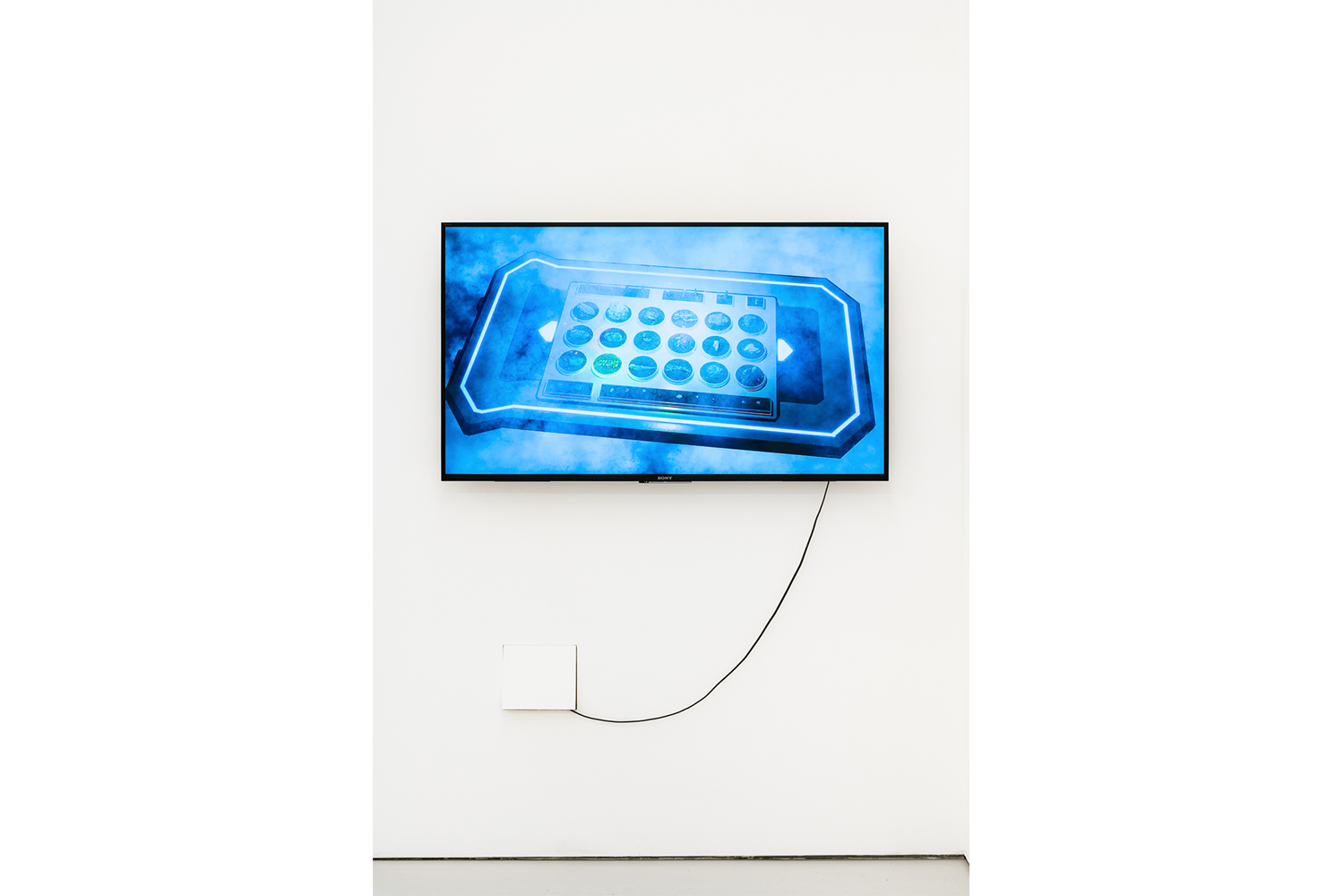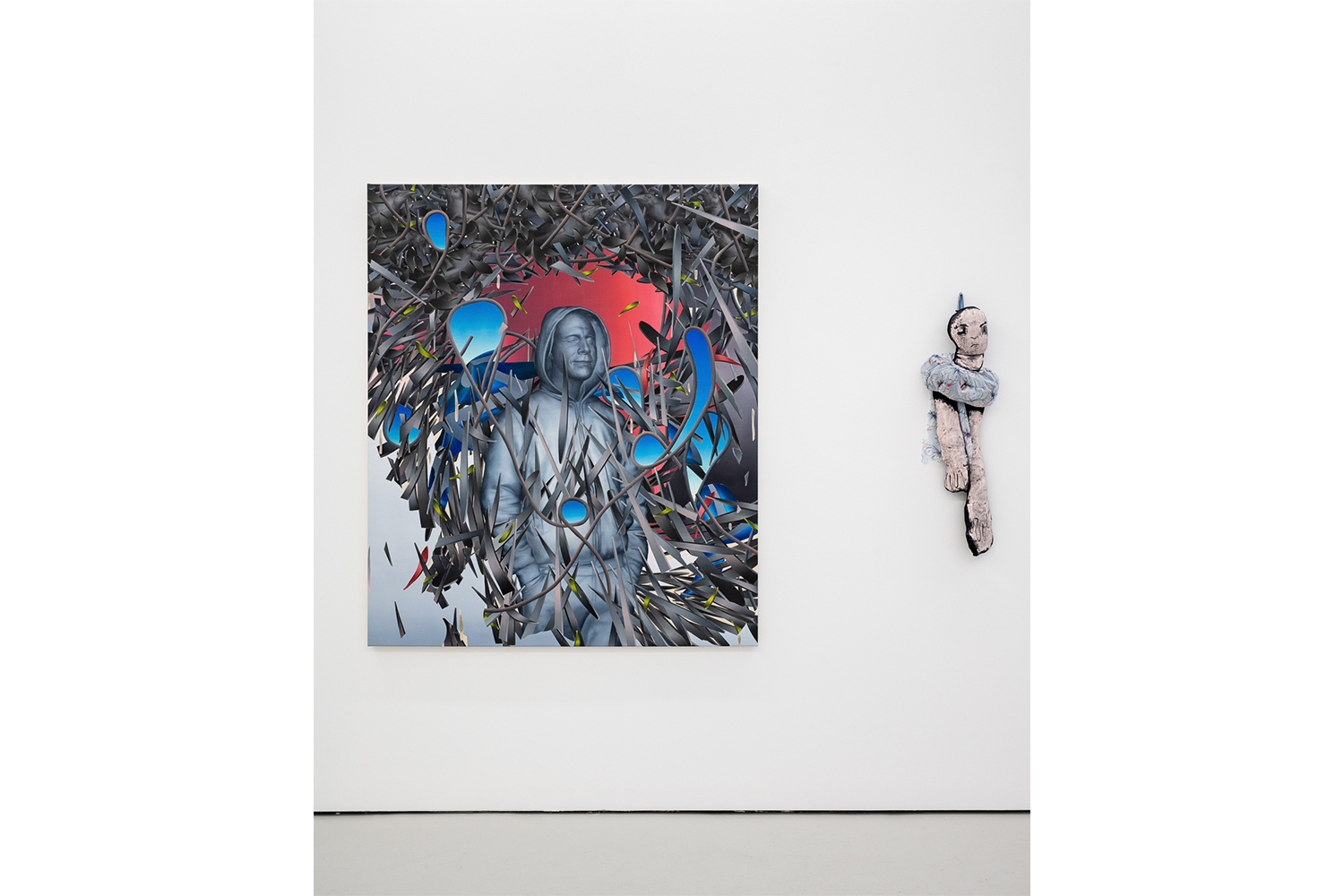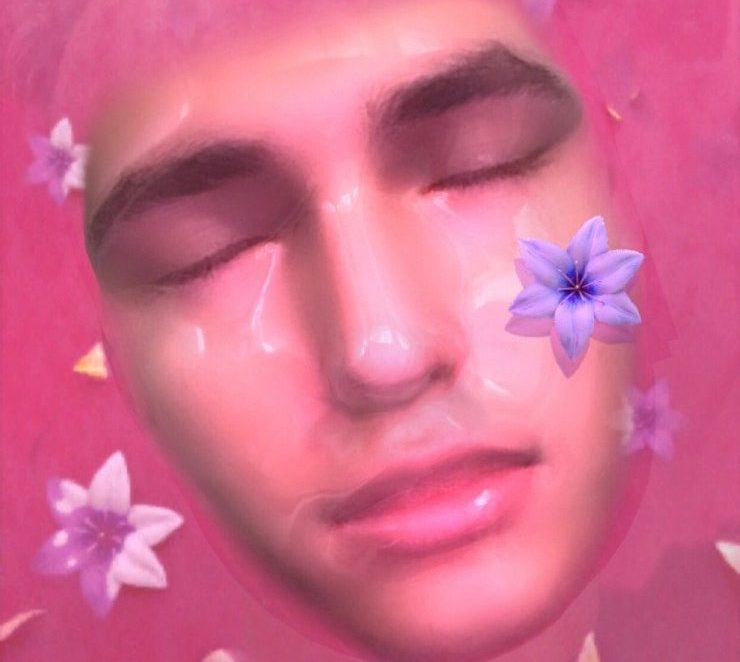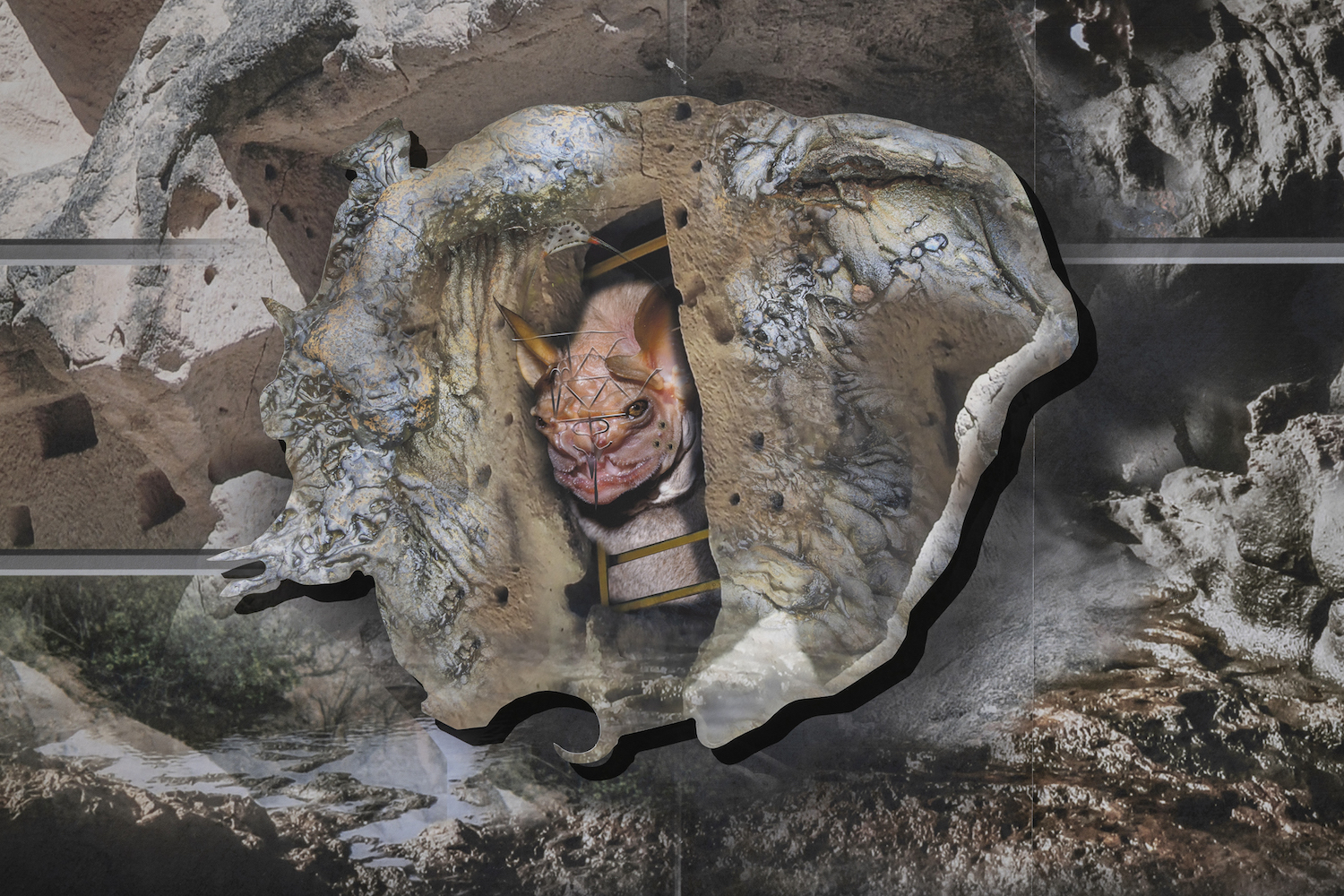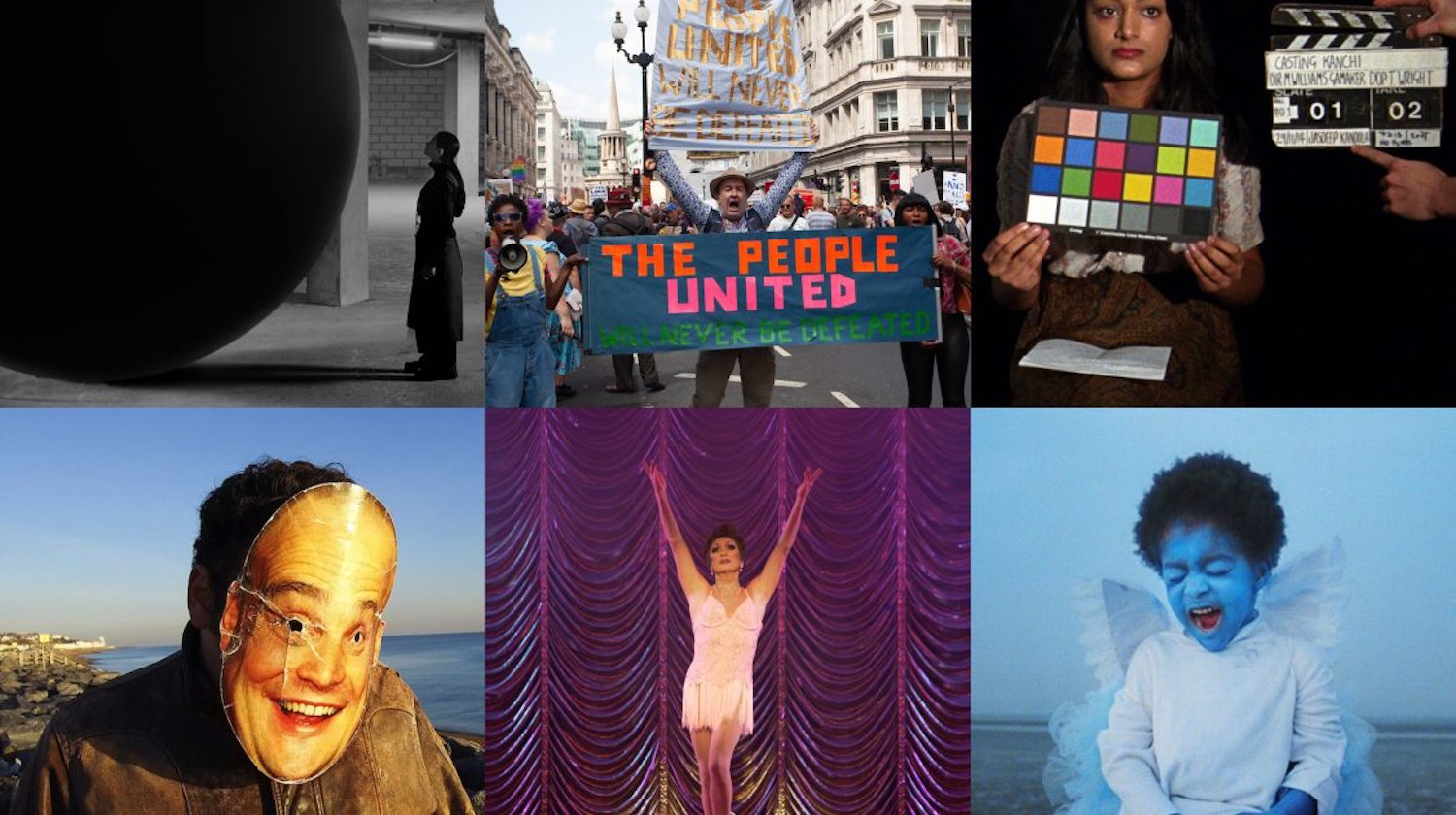Originating from the Greek, kakos (“bad” or “evil”) and topos (“place”), a cacotopia is a dystopian world characterized by social discord and political unrest. Annka Kultys Gallery’s “CACOTOPIA 06” – marking the gallery’s age – explores the theme of the body, often the female body. Of the show’s twelve artists, who include Ai-Da Robot (born 2019), ten came together to curate the show: riffing on symmetries and connections; creating a visual language of form, color, and scale woven intricately together. The result is magnetic – pulsing between utopian and dystopian.
Melding the digital with the physical, a hooded figure emerges out of a fractal world in László von Dohnányi’s A person with a white head covering (2022), its title indebted to AI image-comparison software that adds description to images for the visually impaired. Wires and dagger-like geometries interspersed with crows and leaves encircle the Internet-found 3D scanned body, foregrounding a coral sky. Extending out of Dohnányi’s two-dimensionality into infinite physicality is Shir Cohen’s fleshy figure, Her Perfume (2021), which draws inspiration from alt-right and TERF (trans-exclusionary radical feminist) Internet forums. Sewn out of old clothing and then painted, Cohen’s soft sculpture is transformed from the white, blonde-haired subservience of a “tradwife” meme into a new non-binary body – bald, torso removed. Cohen began weaving and painting on repurposed clothing during the pandemic: An approach now central to her research-intensive practice, which plays on hackneyed tropes of “women’s work,” exploring bodies haunted by threats of physical violence and body dysmorphia.
Lydia Pettit in turn draws on horror iconography as a lens through which to examine her own body and trauma (See?, 2022). Meticulous embroidery mimics multi-colored brushstrokes as an outstretched hand offers up glistening black liquid to its audience – the same black liquid that subsumes her naked body in another show at White Cube. Alongside Elsa Rouy’s large-scale paintings, I’m Lookin’ at you’ (2021) and Crushing for the Sake of it (2021), See? serves as a darkly contrasting visual anchor. Yet Rouy’s beguiling grotesques are also tools of liberation. Radiating frenetic sexuality, a surreal vagina opens its crying eye as toes crush organ-like pomegranates. Elsa Rouy’s subtle counterpart is Kate Bickmore whose hyper-realistic diptych of vaginal florascapes Made in the Minds of Each Other (2022) represents her long-distance relationship with her partner. Bickmore uses floral iconography as self-portraiture, depicting her flowers as “being powerful, having agency, having sexuality.” Nearby, Leon Pozniakow’s large-scale watercolor on canvas, Bristol International ~ Newark To PDX (2021) depicts an intimate scene of two lovers melting into each other in a hot tub hazy with memory. His potent blue cobalt is then picked up Alice Bucknell’s film: The Martian Word for World is Mother (2022), which extends the artist’s explorations of non-anthropocentric world-making on earth.
This show’s careful weaving is ultimately defined by the chance encounters of a lockdown that has threatened a generation of young artists with enforced precarity. Of those exhibiting here, Kate Bickmore, Shir Cohen, Lydia Pettit, Leon Pozniakow, and Catherine Repko are all based at Brickfield Studios in East London, which has become both a refuge and a hotbed of creative fertility during these last lost years in London. Their promise is our bounty.

